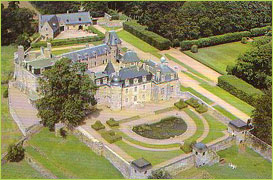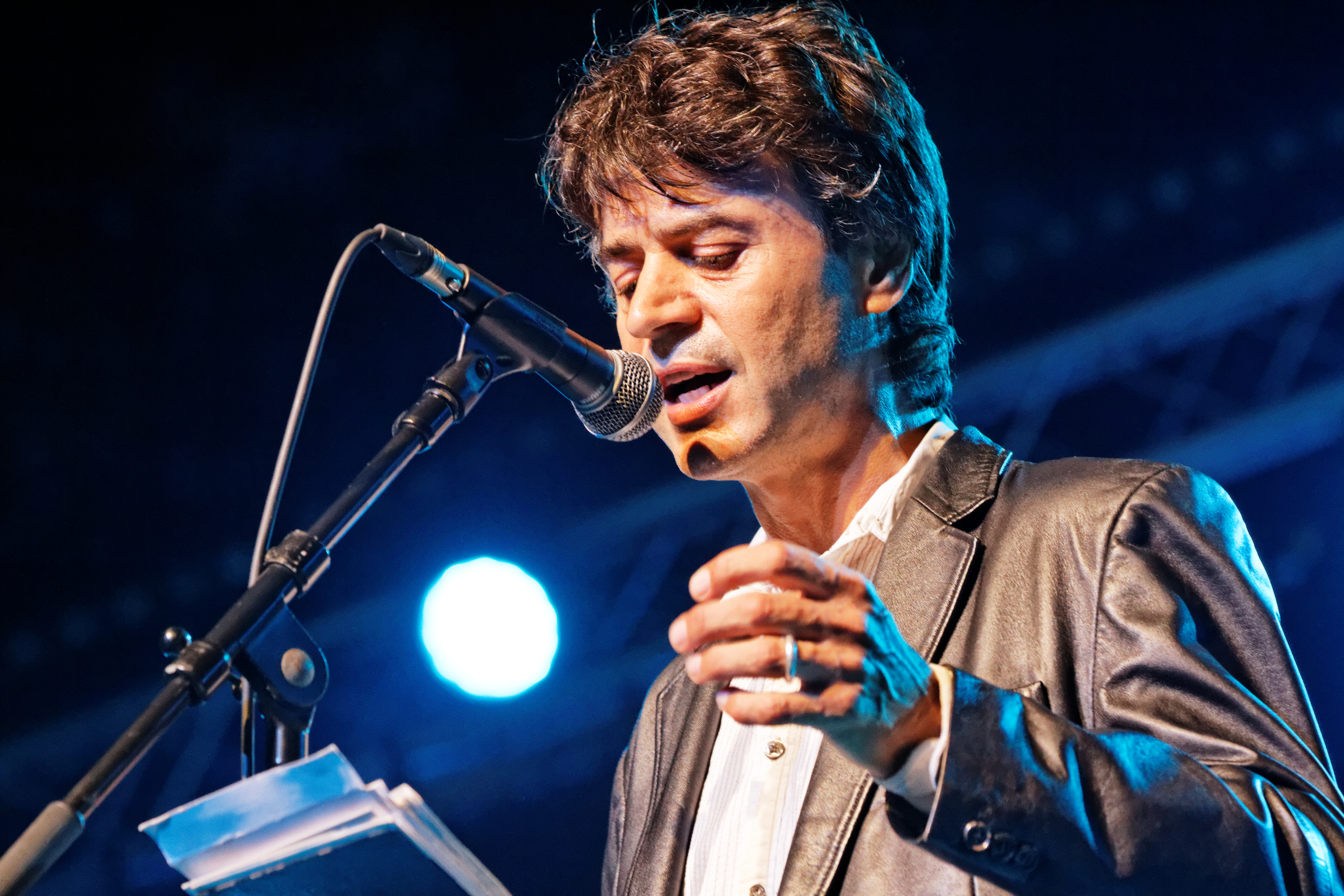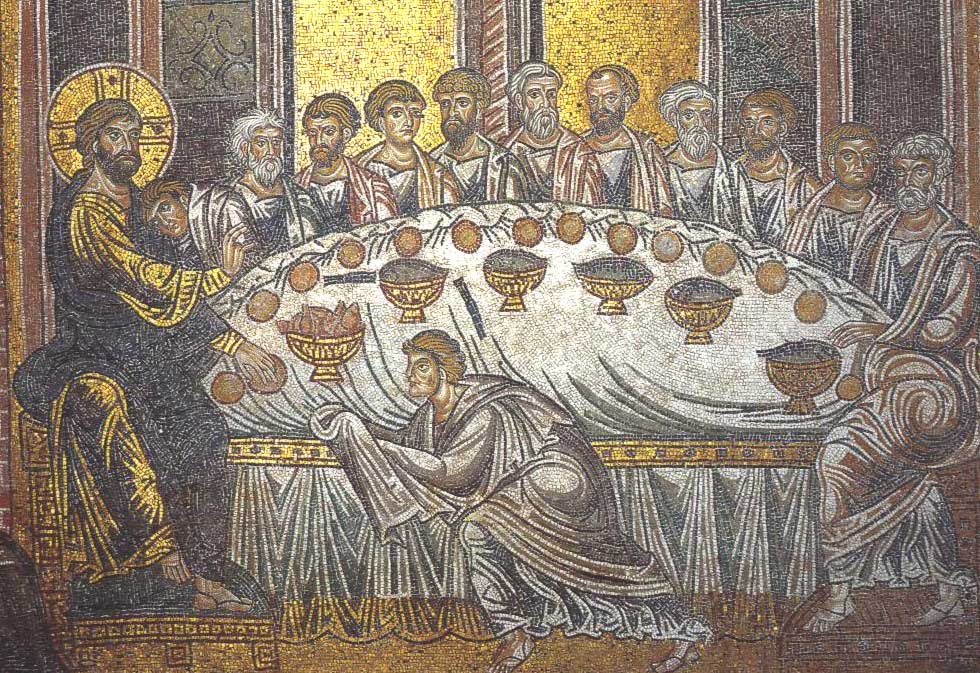|
Lanvellec
Lanvellec (; br, Lanvaeleg) is a commune in the Côtes-d'Armor department of Brittany in north-western France. Culture The commune has a rich architectural and cultural heritage. The parish church of Saint-Brandan was rebuilt between 1852 and 1868. Within it, are some interesting items, including an organ, built in 1653 by the famous English organ builder, Robert Dallam. The organ fell into disrepair in the last century but was given historical monument status in 1971. Its restoration by the Italian organ builder, Formentelli, was aided by the mysterious recent reappearance of the 150 pipes belonging to it. Numerous musical events take place in the commune throughout the year, in particular the Festival de musique ancienne de Lanvellec in the autumn. The Gothic ossuary dating from the fifteenth century is situated in the graveyard beside the church. It is one of the finest in Côtes-d'Armor. The charmingly-situated chapel of Saint-Goulven, dating from the seventeenth cent ... [...More Info...] [...Related Items...] OR: [Wikipedia] [Google] [Baidu] |
Château De Rosanbo
The Château de Rosanbo, in the Breton commune of Lanvellec in the French département of Côtes d'Armor (22), overlooks the Bô river valley. The origin of its name stems from this fact, as in Breton it means "rock on the Bô". It has been classified as a ''Monument historique'' (Historic Monument). History The château, which was in the past the stronghold of the Coskaër de Rosanbo family, then later of the Le Peletier de Rosanbo family, is square in shape and has been developed and re-fashioned throughout its history. In the 14th century, a fortified castle was built on a strategic headland, located 4 miles from the bay of Saint-Michel-en-Grève in order to prevent the ascent of the Bô by Scandinavian invaders. In the 16th century, it was extended with a Gothic manor. The buildings were further extended in the 18th century by Louis Le Peletier de Keranroux, first president of the Paris parliament and husband of Geneviève de Coskaër (the last inheritor of that name). ... [...More Info...] [...Related Items...] OR: [Wikipedia] [Google] [Baidu] |
Communes Of The Côtes-d'Armor Department
The following is a list of the 348 communes of the Côtes-d'Armor department of France. The communes cooperate in the following intercommunalities (as of 2020):BANATIC Périmètre des EPCI à fiscalité propre. Accessed 3 July 2020. * *Communauté d'agglomération *Communaut ... [...More Info...] [...Related Items...] OR: [Wikipedia] [Google] [Baidu] |
Denez Prigent
Denez Prigent (; born 17 February 1966 in Santec, Finistère) is a Breton folk singer-songwriter of the ''gwerz'' and ''kan ha diskan'' styles of Breton music. From his debut at the age of 16, he was known for singing traditional songs ''a cappella'', and has moved on to singing his own songs with techno music accompaniments. He has performed in France as well as internationally and has recorded seven studio and two live albums. Biography Childhood and early career During his childhood, Prigent lived with his father in Le Relecq-Kerhuon and spent his weekends at his grandmother's, in Santec. His father, a primary teacher, raised him speaking French, although he spoke Breton fluently, because he did not see the point in teaching Breton to his son. Denez thus discovered the Breton language at his grandmother's, along with its natural harmony and the tendency of Breton speakers of that time to sing written or improvised songs. While in secondary in Brest he preferred listeni ... [...More Info...] [...Related Items...] OR: [Wikipedia] [Google] [Baidu] |
Robert Dallam
Dallam was the surname of a family of English organ builders, active in England and Brittany. The first known member of the family, Thomas Dallam, originated from Dallam in Lancashire. Thomas Dallam I The first Thomas Dallam (1575; after 1620) left Lancashire, to establish himself in London where he became a member of the Blacksmiths' Company. During 1599 and 1600 he went on a voyage from London to Constantinople in order to deliver an organ to the sultan Mehmet III. After his return to England Thomas Dallam married and built many important organs, including that of King's College Chapel, Cambridge. Robert Dallam Thomas Dallam's son Robert Dallam (born ca. 1602) became an important organ builder. He and his family relocated to Brittany during the English Commonwealth, when it was impossible to pursue a career as an organ builder in England. In 1660, following the restoration of the monarchy, Robert Dallam and other members of the family returned to England. Robert an ... [...More Info...] [...Related Items...] OR: [Wikipedia] [Google] [Baidu] |
Lannion-Trégor Communauté
Communauté d'agglomération Lannion-Trégor Communauté is an intercommunal structure, centred on the city of Lannion. It is located in the Côtes-d'Armor department, in the Brittany region, western France. It was created in January 2017. Its seat is in Lannion.Fiche signalétique CA Lannion-Trégor Communauté BANATIC Its area is 904.4 km2. Its population was 99,607 in 2017, of which 19,880 in Lannion proper.Comparateur de territoire [...More Info...] [...Related Items...] OR: [Wikipedia] [Google] [Baidu] |
Last Supper
Image:The Last Supper - Leonardo Da Vinci - High Resolution 32x16.jpg, 400px, alt=''The Last Supper'' by Leonardo da Vinci - Clickable Image, Depictions of the Last Supper in Christian art have been undertaken by artistic masters for centuries, Leonardo da Vinci's late-1490s mural painting in Milan, Italy, being the best-known example. ''(Clickable image—use cursor to identify.)'' poly 550 2550 750 2400 1150 2300 1150 2150 1200 2075 1500 2125 1525 2300 1350 2800 1450 3000 1700 3300 1300 3475 650 3500 550 3300 450 3000 Bartholomew poly 1575 2300 1625 2150 1900 2150 1925 2500 1875 2600 1800 2750 1600 3250 1425 3100 1400 2800 1375 2600 James Minor poly 1960 2150 2200 2150 2350 2500 2450 2575 2375 2725 2375 2900 2225 3100 2225 3225 1600 3225 1825 2700 1975 2450 1925 2300 Andrew poly 2450 2575 2775 2500 2700 2650 2800 2700 2600 3000 2600 3250 2300 3250 2200 3200 2300 3000 Peter poly 2750 2500 2950 2400 3125 2600 3175 2700 3300 2850 3700 3200 3750 3200 3650 3350 3400 3200 3000 3 ... [...More Info...] [...Related Items...] OR: [Wikipedia] [Google] [Baidu] |
Gobelin
Gobelin was the name of a family of dyers, who in all probability came originally from Reims, France, and who in the middle of the 15th century established themselves in the Faubourg Saint Marcel, Paris, on the banks of the Bièvre. The first head of the firm was named Jehan Gobelin (d. 1476). He discovered a peculiar kind of scarlet dyestuff, and he expended so much money on his establishment that it was named by the common people ''la folie Gobelin''. To the dye-works there was added in the 16th century a manufactory of tapestry. The family's wealth increased so rapidly that in the third or fourth generation some of them forsook their trade and purchased titles of nobility. More than one of their number held offices of state, among others Balthasar, who became successively treasurer general of artillery, treasurer extraordinary of war, councillor secretary of the king, chancellor of the exchequer, councillor of state and president of the chamber of accounts, and who in 1601 ... [...More Info...] [...Related Items...] OR: [Wikipedia] [Google] [Baidu] |
Great Hall
A great hall is the main room of a royal palace, castle or a large manor house or hall house in the Middle Ages, and continued to be built in the country houses of the 16th and early 17th centuries, although by then the family used the great chamber for eating and relaxing. At that time the word "great" simply meant big and had not acquired its modern connotations of excellence. In the medieval period, the room would simply have been referred to as the "hall" unless the building also had a secondary hall, but the term "great hall" has been predominant for surviving rooms of this type for several centuries, to distinguish them from the different type of hall found in post-medieval houses. Great halls were found especially in France, England and Scotland, but similar rooms were also found in some other European countries. A typical great hall was a rectangular room between one and a half and three times as long as it was wide, and also higher than it was wide. It was enter ... [...More Info...] [...Related Items...] OR: [Wikipedia] [Google] [Baidu] |
Baptismal Font
A baptismal font is an article of church furniture used for baptism. Aspersion and affusion fonts The fonts of many Christian denominations are for baptisms using a non-immersive method, such as aspersion (sprinkling) or affusion (pouring). The simplest of these fonts has a pedestal (about tall) with a holder for a basin of water. The materials vary greatly consisting of carved and sculpted marble, wood, or metal. The shape can vary. Many are eight-sided as a reminder of the new creation and as a connection to the practice of circumcision, which traditionally occurs on the eighth day. Some are three-sided as a reminder of the Holy Trinity: Father, Son, and Holy Spirit. Fonts are often placed at or near the entrance to a church's nave to remind believers of their baptism as they enter the church to pray, since the rite of baptism served as their initiation into the Church. In many churches of the Middle Ages and Renaissance there was a special chapel or even a se ... [...More Info...] [...Related Items...] OR: [Wikipedia] [Google] [Baidu] |
Communes Of France
The () is a level of administrative division in the French Republic. French are analogous to civil townships and incorporated municipalities in the United States and Canada, ' in Germany, ' in Italy, or ' in Spain. The United Kingdom's equivalent are civil parishes, although some areas, particularly urban areas, are unparished. are based on historical geographic communities or villages and are vested with significant powers to manage the populations and land of the geographic area covered. The are the fourth-level administrative divisions of France. vary widely in size and area, from large sprawling cities with millions of inhabitants like Paris, to small hamlets with only a handful of inhabitants. typically are based on pre-existing villages and facilitate local governance. All have names, but not all named geographic areas or groups of people residing together are ( or ), the difference residing in the lack of administrative powers. Except for the municipal arr ... [...More Info...] [...Related Items...] OR: [Wikipedia] [Google] [Baidu] |
Reredos
A reredos ( , , ) is a large altarpiece, a screen, or decoration placed behind the altar in a church. It often includes religious images. The term ''reredos'' may also be used for similar structures, if elaborate, in secular architecture, for example very grand carved chimneypieces. It also refers to a simple, low stone wall placed behind a hearth. Description A reredos can be made of stone, wood, metal, ivory, or a combination of materials. The images may be painted, carved, gilded, composed of mosaics, and/or embedded with niches for statues. Sometimes a tapestry or another fabric such as silk or velvet is used. Derivation and history of the term ''Reredos'' is derived through Middle English from the 14th-century Anglo-Norman ''areredos'', which in turn is from''arere'' 'behind' +''dos'' 'back', from Latin ''dorsum''. (Despite its appearance, the first part of the word is not formed by doubling the prefix "re-", but by an archaic spelling of "rear".) In the 14th and 1 ... [...More Info...] [...Related Items...] OR: [Wikipedia] [Google] [Baidu] |
Monument Historique
''Monument historique'' () is a designation given to some national heritage sites in France. It may also refer to the state procedure in France by which National Heritage protection is extended to a building, a specific part of a building, a collection of buildings, a garden, a bridge, or other structure, because of their importance to France's architectural and historical cultural heritage. Both public and privately owned structures may be listed in this way, as well as movable objects. As of 2012 there were 44,236 monuments listed. The term "classification" is reserved for designation performed by the French Ministry of Culture (France), Ministry of Culture for a monument of national-level significance. Monuments of lesser significance may be "inscribed" by various regional entities. Buildings may be given the classification (or inscription) for either their exteriors or interiors. A monument's designation could be for a building's décor, its furniture, a single room, or eve ... [...More Info...] [...Related Items...] OR: [Wikipedia] [Google] [Baidu] |





